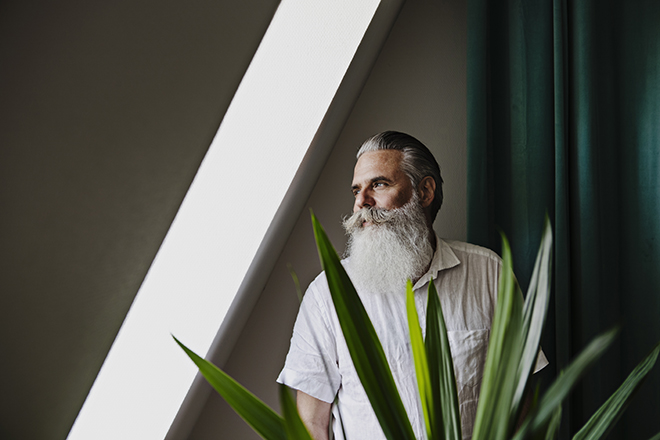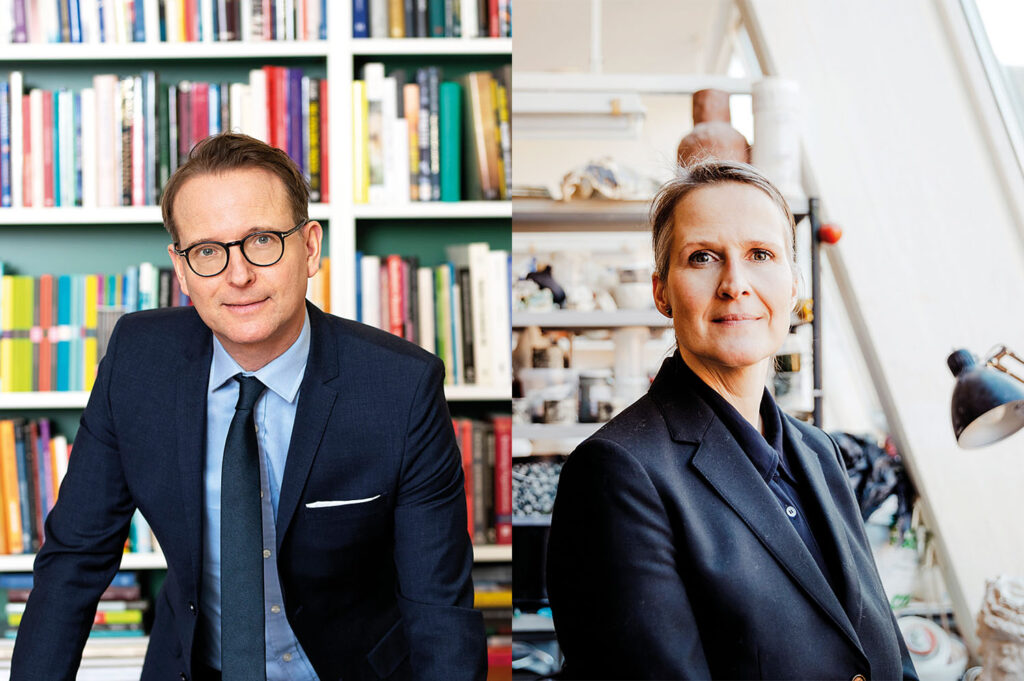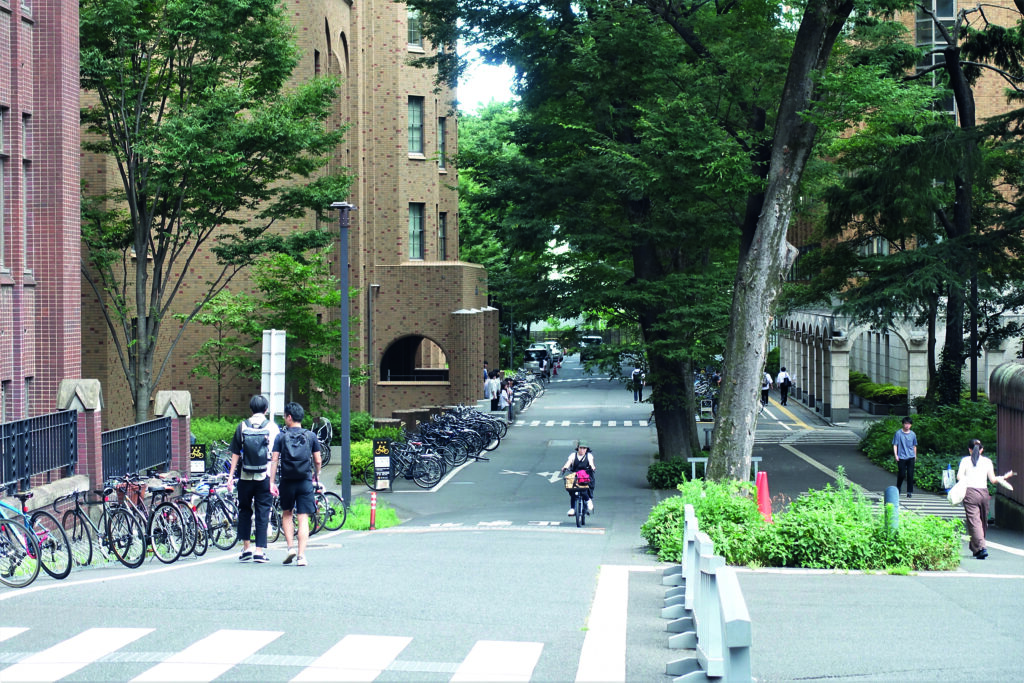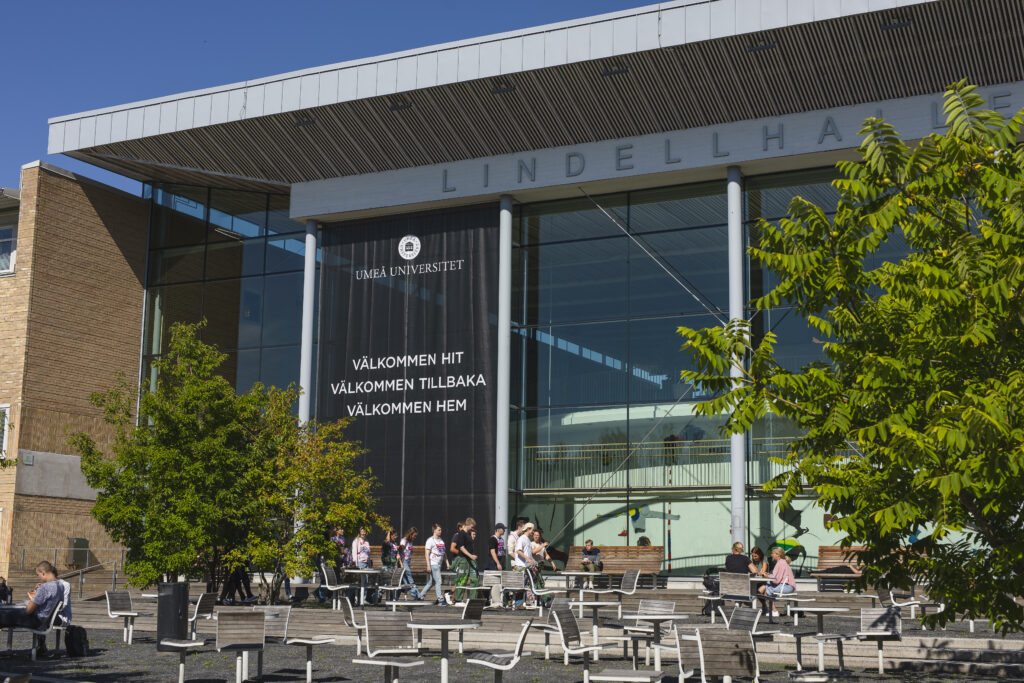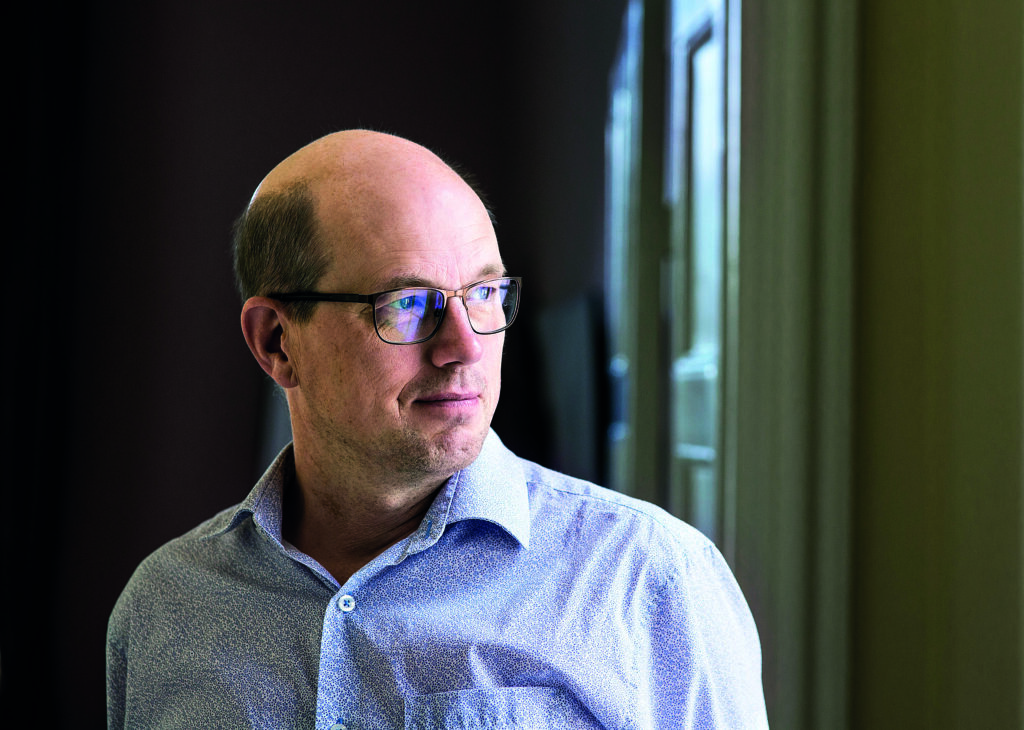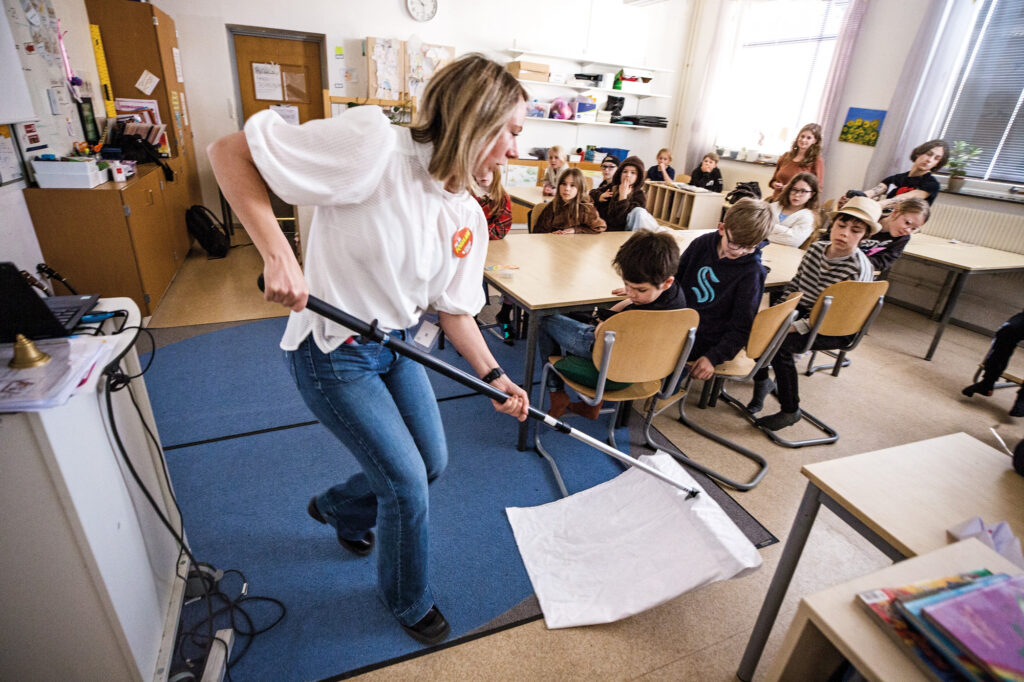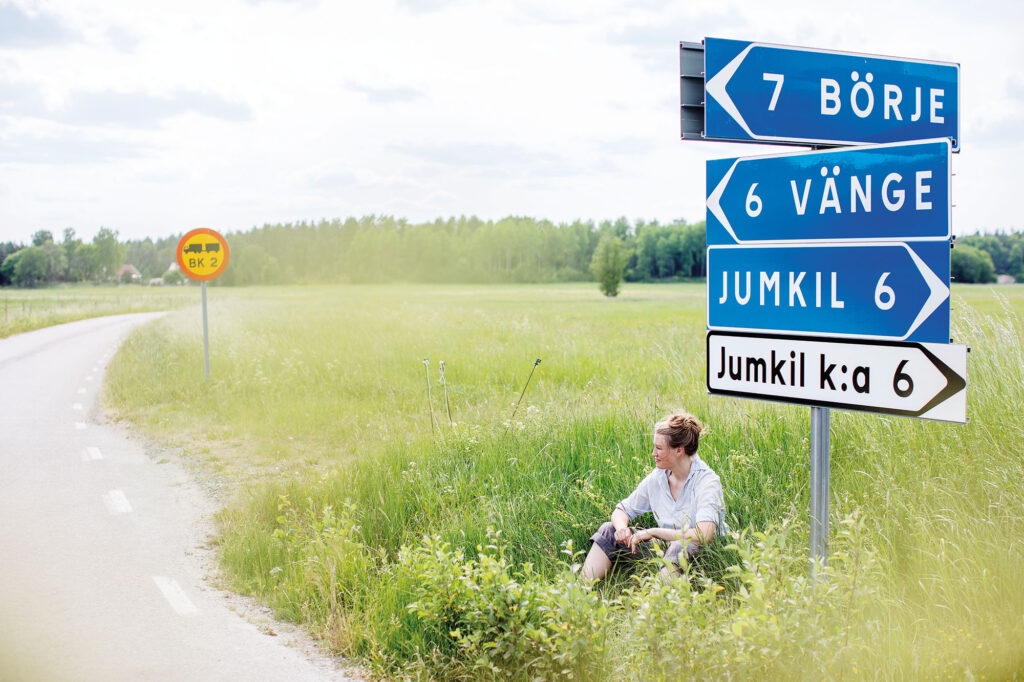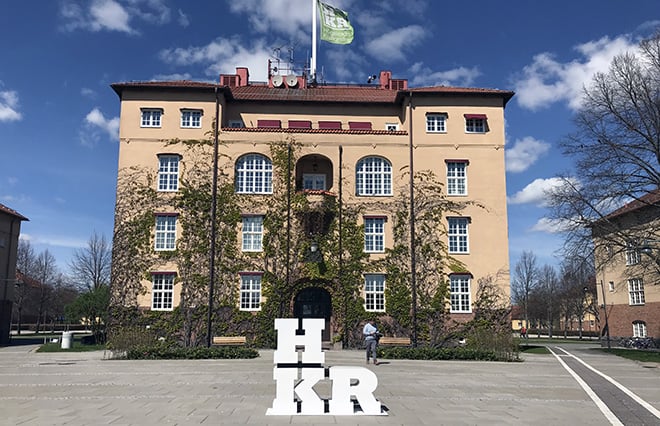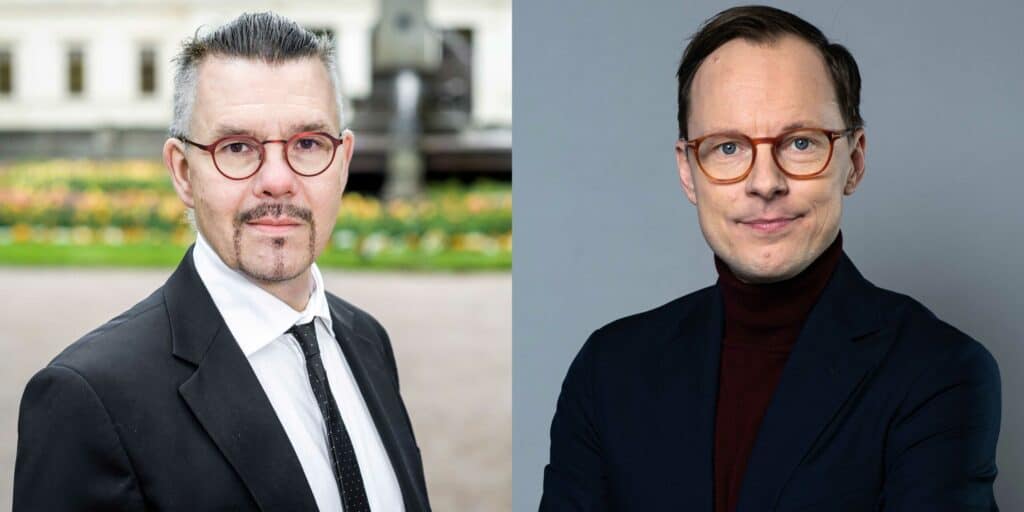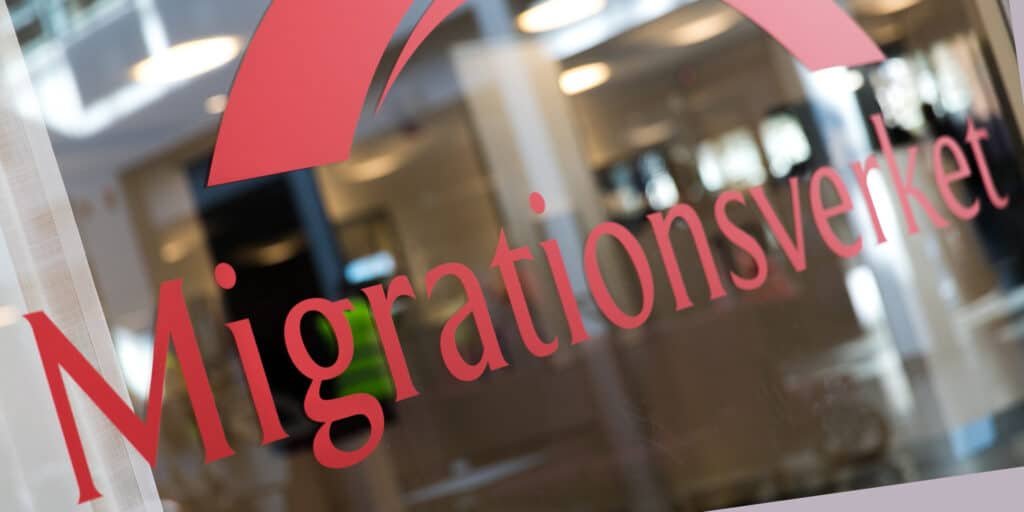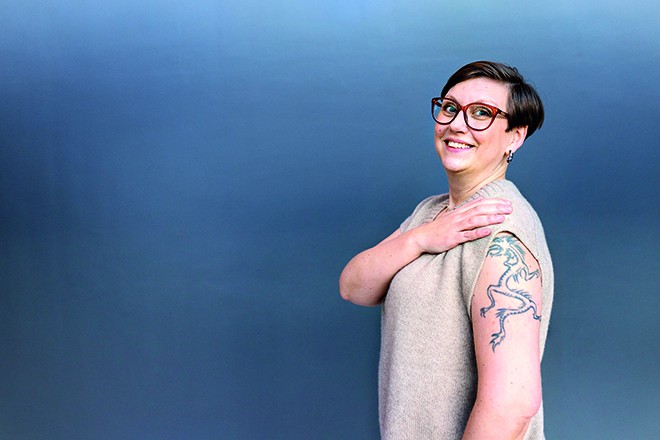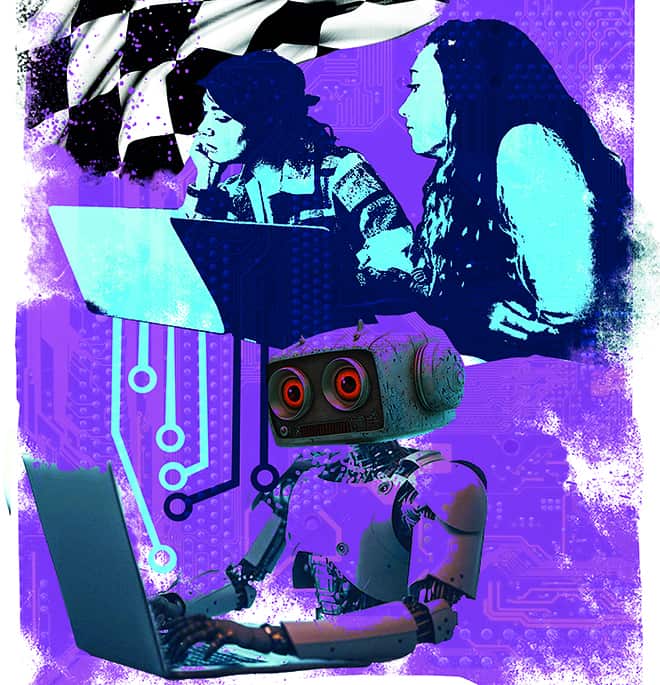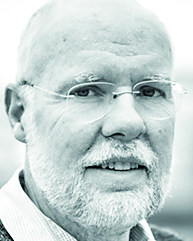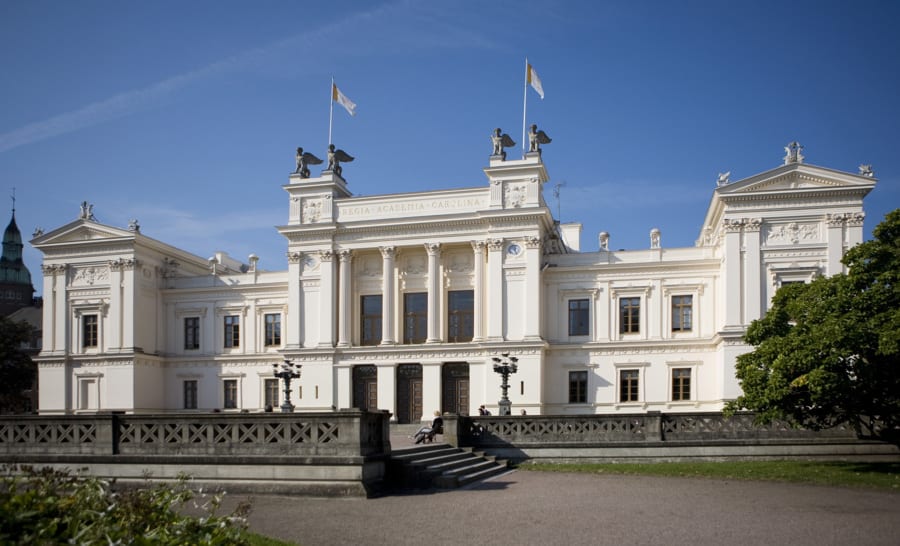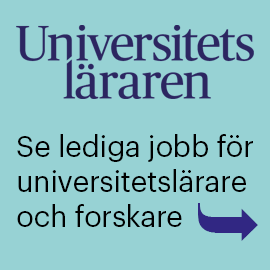Small greyish-white beard hairs fall on the black cape. The gold-coloured shaver hums while barber Homan Taghizadeh concentrates intensely on ensuring that Christer Mattsson’s long beard is straight. He is a beard model and has been called in for a touch-up. He will be photographed tomorrow.
“He has a unique appearance,” says Taghizadeh. “His beard is long and beautiful, and it can be an inspiration to other men.”
It started two and a half years ago, when Mattsson was in the United States to interview former American Nazis and had forgotten to pack his beard trimmer. When he got back home, his beard was so bushy that his wife Elisabeth demanded that he go to a barber.
“It’s good for my anxiety about getting grey hair,” he says happily.
The trip to the United States was part of a research project on ways into and out of the Nazi movement. Christer Mattsson also follows members of the Nordic Resistance Movement, NMR. They come to his house sometimes; spend a few days at his holiday home; eat, talk, sleep and walk. Spending time together builds trust and gives him insight into who is in the movement and what drives them.
“I get close to their thoughts about whether they should carry on or quit, their doubts and the problems they encounter as Nazis.”
They read what he writes. They agree with some of his conclusions and are disappointed with others. They agree that stigmatisation is not a good strategy for reducing people’s commitment and dangerousness.
“For example, many of them have experience of losing their jobs because they are active Nazis. They then become more involved in the movement, more isolated from the society around them and more aggressive.”
Invites Nazis home
Christer Mattsson is not worried about safety when he meets NMR members in his home. He has no reason to believe that they will be violent.
“When you socialize in a home environment, you build trust. They understand what is important to me and that I do not mean them harm as people.”
Two events made an early impression on his choice of career. Mattsson is leaning back in the barber’s chair while the razor trims his sideburns. He talks about his grandfather, who was a Roma and had only been allowed to go to school for two weeks. When he read the newspaper, he would go into the kitchen, close the door and turn up the volume on the radio. “Later, I understood that he didn’t want me to hear when he sounded the words as he read.”
“Not being able to read was shameful to him. My grandfather did not want to talk about his experiences of being a Roma in an anti-Gypsy society, but he talked to me from an early age about the equal value of all people and about not judging others.”
Christer Mattsson went to a technical high school with the aim of going on to study to become a mechanical engineer at Chalmers. He would be the first in the family to graduate from high school. He enjoyed being with his classmates and his physics teacher, Olga. But some of the boys in the class did not like the fact that Olga was a woman and a Polish Jew.

Stood up against racism
When she was to take over as mathematics teacher, those boys wrote a protest letter. The others in the class signed it. The letter landed on Mattson’s desk. He was usually shy, but he felt he had to take a stand. He refused to sign, saying the letter was racist.
“I decided to become a teacher, and I withdrew my application from Chalmers to apply for teacher training. At that moment, my whole fundamental idea of pedagogy was formed; that tomorrow’s society is created in today’s classrooms. If this could be allowed to happen among future engineers, we faced a threat.” He came to devote his professional life to the lives and ideas of racists.
“I’ve always wanted to understand what they have been through that makes them think in this way.” One thing that is common to many of the Nazis he has interviewed is that they grew up in environments characterised by racist, homophobic and anti-Semitic thinking. When they then expressed extreme views in school, they were told off. Often the school also organized anti-racism days or weeks.
“It’s just like being put in the pillory in the medieval town square. Everyone knows that this is not being done because the class or the school needs it, but because you need it, and you have everyone else as a spectator. That position is difficult to escape. That is how radicalization works.”
In 2018, Mattsson defended his thesis The Extremist in the Classroom – A Perspective on the Expectations on Schools to be Responsible for Preventing Future Terrorism. One of his current research projects is about how schools can prevent students from being drawn into racist environments.
Ideology matters
He explains that ideology plays an important role both in attracting people to Nazism and in keeping them there.
“I am opposed to several researchers in my field, who say that ideology does not matter much, and that friendship and fighting are what is important. But they have primarily interviewed skinheads who have left the ideology. For my informants, the ideology is important all the time, before they enter the movement and after they have left it.”
A common reason why Nazis leave the movement is that they lose faith in it. It may be that the sense of community was not as strong as they had first thought, that the violence escalates or that the others were not as devout National Socialists. “Leaving almost always comes before deradicalisation,” he says. “Most who leave still have National Socialist beliefs.”
When it comes to deradicalisation, shame plays a major role, he explains. The shame of being seen as ”the hateful other” by those around you. To get rid of the shame, you start telling people that you are no longer in the movement. Then you talk about how you disappointed your family and about people you beat up. Then comes the guilt.
“Only when shame turns into guilt does something deeply existential happen within a person that enables deradicalisation.”
Homan Taghizadeh blows away the last hairs with a blow dryer. Christer Mattsson puts on his blue jacket, and we walk to the Segerstedt Institute, where he is the director. The Institute is a national resource centre tasked with building knowledge of preventive work against violent ideologies and racist organisations.
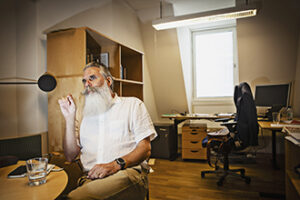
Worked with intolerance in schools
As a young teacher, Mattsson travelled around performing a monologue about racism at different schools. When 14-year-old John Hron was murdered by four skinheads in 1995, Christer Mattsson was commissioned by Kungälv municipality to develop a model to counter intolerant attitudes in schools. This is how the Tolerance Project began, which then became the starting point for the Segerstedt Institute.
The Institute got off to a stormy start in 2015, with criticism from other researchers. Many were disappointed about the focus on violent extremism when the government had promised a research centre on racism. The initiative was politically controlled, researchers said, and the focus was on the actions of individuals rather than societal structures. They were also critical of the fact that the tolerance project did not have any scientific basis, which would impact the quality of the institute.
Christer Mattsson sits in his study and says that there were some misunderstandings at the beginning, for example that the Institute would receive research funding without any competition. “Since then, we’ve applied for and received a lot of research funding. I’m pretty sure we would have been shut down by now if we had not shown any academic quality.”
When it comes to societal structures and the actions of individuals, he believes that they are connected. “Structures are built and maintained by people,” he says. “If we are to change them, it is not enough that a small elite is enlightened. Everyone must be educated and must understand.”
Frightened by developments in society
When asked about today’s society, Mattsson replies that he is terrified. He cannot always hear the difference between what the Nazis say and what the general debate sounds like when it comes to immigration. Two conspiracy theories that only existed in right-wing extremist environments 30 years ago have permeated deep into society. One is that there is a conscious form of replacement of peoples, that white people are being pushed out by non-white people. The second is the notion of the deep state; that democracy is a facade behind which other forces rule, such as the establishment or a Jewish world conspiracy.
“Together, these ideas are lethal. For example, they led to the storming of the US Congress in January this year.”
To protect democracy, he says, we need to strengthen freedom of expression, the rights of minorities and the independence of the judiciary. “As a teacher, I also believe in education. In giving people with widely different opinions the opportunity to meet and discuss in the classroom without threats or reprisals.”
